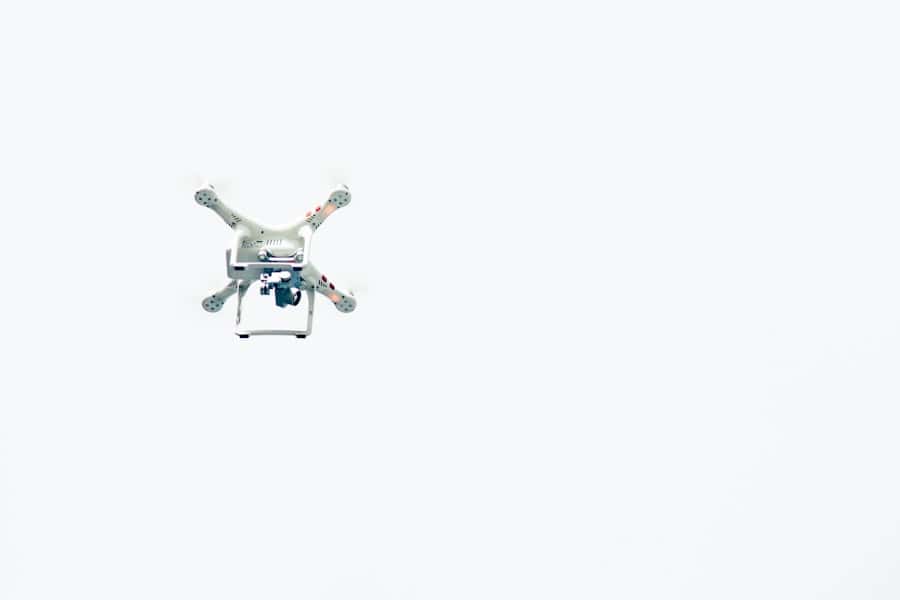The advent of drone technology has revolutionized various sectors, and emergency response is no exception. Drones, or unmanned aerial vehicles (UAVs), have emerged as critical tools in managing crises, providing real-time data, and enhancing situational awareness during emergencies. Their ability to access hard-to-reach areas, gather high-resolution imagery, and deliver supplies has made them indispensable in various scenarios, from natural disasters to urban emergencies.
As the technology continues to evolve, the potential applications of drones in emergency response are expanding, offering new solutions to age-old challenges faced by first responders. The integration of drones into emergency response frameworks is not merely a trend; it represents a paradigm shift in how organizations approach disaster management. Traditional methods often involve significant delays in data collection and resource deployment, which can hinder effective response efforts.
Drones can bridge these gaps by providing immediate aerial perspectives and facilitating rapid assessments of affected areas. This capability is particularly crucial in the initial stages of an emergency when timely information can save lives and optimize resource allocation. As we delve deeper into the various roles drones play in emergency response, it becomes evident that their impact is profound and multifaceted.
Key Takeaways
- Drones play a crucial role in emergency response by providing real-time data and imagery for disaster assessment and search and rescue operations.
- In natural disaster response, drones can be used for damage assessment, mapping, and delivering essential supplies to inaccessible areas.
- Drones are valuable tools in search and rescue operations, as they can cover large areas quickly and provide aerial support for locating missing persons.
- Real-time monitoring and assessment with drones enable emergency responders to make informed decisions and prioritize resources effectively during a crisis.
- Challenges and limitations of drone use in emergency response include regulatory restrictions, limited battery life, and potential privacy and ethical concerns.
The Role of Drones in Natural Disaster Response
Assessing Damage in Real-Time
During hurricanes, drones can be deployed to assess damage in real-time, capturing high-resolution images that help emergency management teams understand the extent of destruction. This information is crucial for determining where to allocate resources and how to prioritize rescue operations.
Surveying Affected Areas
In the aftermath of an earthquake, drones can quickly survey affected areas to identify collapsed structures and locate survivors trapped beneath debris. Their ability to fly over hazardous terrain allows them to gather data that would be dangerous or impossible for human responders to access immediately.
Enhancing Disaster Response
For example, after the 2015 Nepal earthquake, drones were utilized to create detailed 3D maps of the affected regions, enabling aid organizations to plan their interventions more effectively. The speed and efficiency with which drones can operate make them essential tools for disaster response teams striving to mitigate the impact of natural calamities.
Drones in Search and Rescue Operations

Search and rescue (SAR) operations are among the most critical aspects of emergency response, often requiring rapid deployment and precise coordination. Drones have transformed SAR efforts by providing aerial support that enhances visibility and situational awareness. Equipped with thermal imaging cameras, drones can detect body heat even in challenging conditions such as dense forests or during nighttime operations.
This capability significantly increases the chances of locating missing persons quickly. A notable example of drone use in SAR operations occurred during the 2017 wildfires in California. Firefighters deployed drones equipped with infrared cameras to locate individuals who had become trapped or disoriented amidst the flames.
The drones provided real-time video feeds that allowed incident commanders to make informed decisions about where to direct ground teams. Furthermore, drones can also deliver essential supplies such as food, water, or medical kits to individuals stranded in remote locations, thereby enhancing their chances of survival until help arrives.
Real-Time Monitoring and Assessment with Drones
One of the most significant advantages of using drones in emergency response is their ability to provide real-time monitoring and assessment capabilities. Drones can be equipped with various sensors and cameras that capture data on environmental conditions, infrastructure integrity, and human activity during emergencies. This information is vital for decision-makers who need to understand the evolving situation on the ground.
For instance, during flooding events, drones can monitor water levels and assess the movement of floodwaters in real-time. This data can inform evacuation orders and help emergency services anticipate where flooding may spread next. Additionally, drones can be used to monitor air quality following industrial accidents or chemical spills, providing critical information about potential health risks to first responders and affected communities.
The ability to gather and analyze data rapidly allows emergency management teams to adapt their strategies dynamically as situations develop.
Challenges and Limitations of Drones in Emergency Response
Despite their numerous advantages, the use of drones in emergency response is not without challenges and limitations. One significant concern is the regulatory landscape surrounding drone operations. Many countries have strict regulations governing drone flights, particularly in urban areas or near airports.
These regulations can hinder the rapid deployment of drones during emergencies when time is of the essence.
Another challenge lies in the technical limitations of drone technology itself.
While drones are capable of capturing high-resolution images and data, they are often limited by battery life and payload capacity. In prolonged emergencies or large-scale disasters, drones may need to return frequently for recharging or refueling, which can disrupt continuous monitoring efforts. Additionally, adverse weather conditions such as high winds or heavy rain can impede drone operations, limiting their effectiveness when they are needed most.
Integration of Drones with Other Emergency Response Technologies

The future of emergency response lies in the integration of various technologies, and drones are no exception. By combining drone capabilities with other emergency response technologies such as Geographic Information Systems (GIS), artificial intelligence (AI), and machine learning algorithms, responders can enhance their situational awareness and decision-making processes significantly. For example, integrating drone-collected data with GIS platforms allows for more accurate mapping and analysis of disaster-affected areas.
Moreover, AI can be employed to analyze drone imagery quickly, identifying patterns or anomalies that may require immediate attention. This integration streamlines the data processing workflow, enabling responders to focus on critical tasks rather than sifting through vast amounts of information manually. Additionally, drones can work in tandem with ground-based robots or automated systems to create a comprehensive response strategy that maximizes efficiency and effectiveness.
Regulatory and Ethical Considerations for Drone Use in Emergency Response
As drone technology continues to evolve and become more prevalent in emergency response scenarios, regulatory and ethical considerations must be addressed comprehensively. Privacy concerns are paramount; the use of drones equipped with cameras raises questions about surveillance and data collection practices during emergencies. Striking a balance between effective response efforts and respecting individual privacy rights is essential for maintaining public trust.
Furthermore, ethical considerations extend to the deployment of drones in sensitive situations such as search and rescue operations or disaster assessments involving vulnerable populations. Ensuring that drone operators are trained not only in technical skills but also in ethical decision-making is crucial for responsible drone use. Establishing clear guidelines for drone operations during emergencies can help mitigate potential ethical dilemmas while maximizing the benefits that this technology offers.
Future Trends and Developments in Drone Technology for Emergency Response
The future of drone technology in emergency response is poised for significant advancements as research and development continue to progress rapidly. One promising trend is the development of autonomous drones capable of operating without direct human control. These drones could be programmed to follow predefined flight paths or respond dynamically to changing conditions on the ground, allowing for more efficient data collection and resource deployment.
Additionally, advancements in battery technology may lead to longer flight times and increased payload capacities for drones, enabling them to carry more sophisticated sensors or larger quantities of supplies during emergencies. The integration of 5G technology could further enhance real-time communication capabilities between drones and command centers, facilitating faster decision-making processes. Moreover, as public acceptance of drone technology grows, we may see increased collaboration between government agencies, non-profit organizations, and private companies in developing innovative solutions for emergency response challenges.
This collaborative approach could lead to more comprehensive training programs for drone operators and improved regulatory frameworks that support effective drone use while addressing safety concerns. In conclusion, the role of drones in emergency response is multifaceted and continually evolving. As technology advances and integration with other systems improves, drones will undoubtedly play an increasingly vital role in enhancing our ability to respond effectively to emergencies across various contexts.
A related article to How Drones Are Revolutionizing Real-Time Emergency Response is “What Is the Best Android Health Management Watches?” which discusses the latest advancements in wearable technology that can help individuals monitor their health and fitness levels. To learn more about the best Android health management watches, check out the article here.
FAQs
What are drones?
Drones, also known as unmanned aerial vehicles (UAVs), are aircraft that are operated without a human pilot on board. They can be controlled remotely by a human operator or autonomously by onboard computers.
How are drones revolutionizing real-time emergency response?
Drones are revolutionizing real-time emergency response by providing a rapid and efficient way to gather information and deliver supplies in emergency situations. They can be deployed quickly to assess the extent of a disaster, search for survivors, and deliver medical supplies or other essential items to areas that are difficult to access.
What are some examples of how drones are being used in emergency response?
Drones are being used in emergency response for a variety of purposes, including assessing damage after natural disasters, monitoring wildfires, conducting search and rescue operations, and delivering medical supplies to remote or hard-to-reach areas.
What are the benefits of using drones in emergency response?
The benefits of using drones in emergency response include their ability to access hard-to-reach areas, provide real-time data and imagery, reduce the risk to human responders, and deliver supplies quickly and efficiently.
What are the challenges of using drones in emergency response?
Challenges of using drones in emergency response include regulatory restrictions, limited flight time and range, potential interference with other emergency response efforts, and concerns about privacy and safety.


Add a Comment